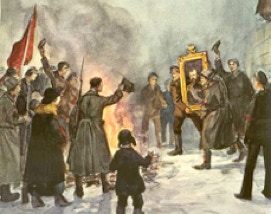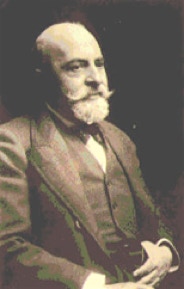

By the turn of the 20th century, Russian music had become a mature art. The works of Tchaikovsky, Rimsky-Korsakov, Mussorgsky and Borodin, having been played at home and abroad, established a national character and tradition that those masters wanted to see passed on to succeeding generations. The most important Russian musical torchbearer of the two decades after 1900, the time between the deaths of Tchaikovsky and his contemporaries and the rise of the modern school of Prokofiev and Shostakovich, was Alexander Glazunov.
Glazunov was gifted with an exceptional ear and musical memory (after Borodin’s death, he completely reconstructed the Overture to Prince Igor from recollections of Borodin’s piano performance of the piece), and early demonstrated his gifts in his native St. Petersburg. By age nineteen, he had traveled to Western Europe for a performance of his First Symphony. During the 1890s, he established a wide reputation as a composer and a conductor of his own works, journeying to Paris in 1889 to direct his Second Symphony at the World Exhibition.
Alexander Glazunov
(1865 - 1936)

Tchaikovsy's music had a great influence on Glazunov.
The 1905 Revolution was a prelude to the cataclysmic 1917 Bolshevik Revolution.
In 1899, he was engaged as instructor of composition and orchestration at the St. Petersburg Conservatory. When his teacher, Nikolai Rimsky-Korsakov, was dismissed from the Conservatory staff in the wake of the 1905 revolutionary turmoil, Glazunov resigned in protest in April and did not return until December 14th, by which time most of the demands by the faculty for the school’s autonomy had been granted. Two days later he was elected director of the Conservatory. He worked ceaselessly to improve the curriculum and standards of the Conservatory, and made a successful effort to preserve the school’s independence after the 1917 Revolution. In the final years of his tenure, which lasted officially until 1930, Glazunov was criticized for his conservatism (Shostakovich, one of his students, devoted many admiring but frustrated pages to him in his purported memoirs, Testimony) and spent much time abroad.
In 1929, he visited the United States to conduct the orchestras of Boston and Detroit in concerts of his music. When his health broke, in 1932, he settled with his wife in Paris; he died there in 1936. In 1972, his remains were transferred to Leningrad and reinterred in an honored grave. A research institute devoted to him in Munich and an archive in Paris were established in his memory.
Glazunov’s greatest period of creativity came in the years before his Conservatory duties occupied most of his time and energy. He produced much music in all forms except opera — his last major work, the Saxophone Concerto of 1934, bears the opus number 109. His best-known piece is the Violin Concerto, written just before he was installed as director of the Petersburg Conservatory, but a few other works, notably the ballets Raymonda and The Seasons, the Fourth, Fifth and Eighth Symphonies and the atmospheric tone poems The Kremlin and Stenka Razin, occasionally grace concert programs. “Within Russian music, Glazunov has a significant place because he succeeded in reconciling Russianism and Europeanism,” wrote Boris Schwarz. “He was the direct heir of Balakirev’s nationalism but tended more toward Borodin’s epic grandeur. At the same time he absorbed Rimsky-Korsakov’s orchestral virtuosity, the lyricism of Tchaikovsky and the contrapuntal skill of Taneyev. . . . He remains a composer of imposing stature and a stabilizing influence in a time of transition and turmoil.”
Glazunov composed his only Violin Concerto in 1904-1905. Of it, Abraham Veinus wrote, “The Concerto makes the Tchaikovskian point that a Russian melody can comport itself with social grace amid elegantly cosmopolitan surroundings. . . . It is an excellent sample of the urbane turn-of-the-century habit of crossing melancholia with virtuoso brilliance. It accomplished its specific task with skill and honesty, and it should always prove popular with audiences who admire the nearly defunct traditions of good manners, brilliance and obvious, poetical feeling.” Glazunov constructed his Concerto as a single, long span of music ingeniously divided into several sections. The first movement, in effect, is wrapped around the Andante, which stands in the place of the expected development section: i.e., main theme (a chromatically inflected melody of small intervals) — second theme (a sweet strain of brighter mien) — Andante — recapitulation of the main and second themes. A showy cadenza for the soloist leads without pause to the finale, a rousing rondo based on the bounding theme introduced by the trumpets at the movement’s beginning.

PROGRAM NOTES
Concerto for Violin and Orchestra
in A minor, Op. 82
Genre: Concerto; Country: Russia; Period: Late Romantic
Composed in 1904-1905. Premiered on March 4, 1905
in St. Petersburg, with Leopold Auer as soloist.
Leopold Auer, the original dedicatee of the Glazunov Violin Concerto.
